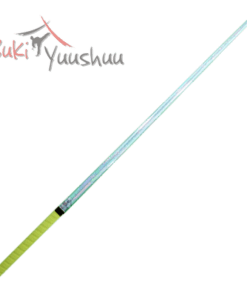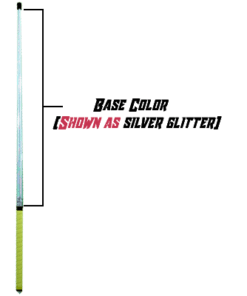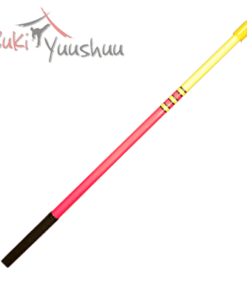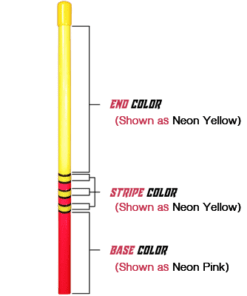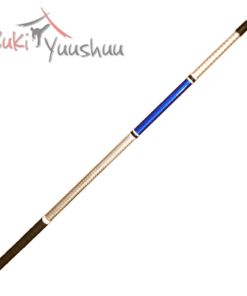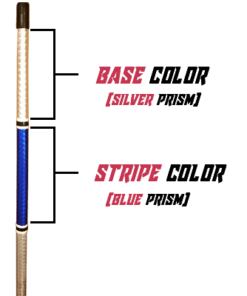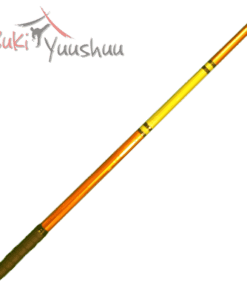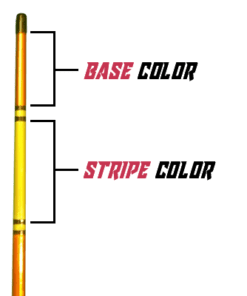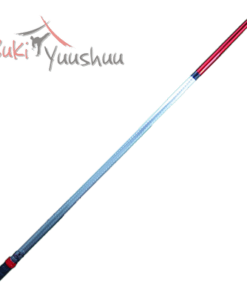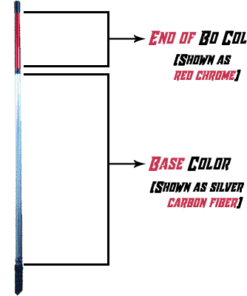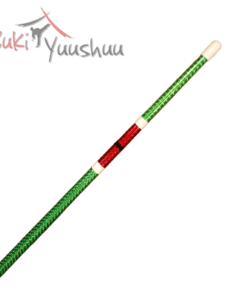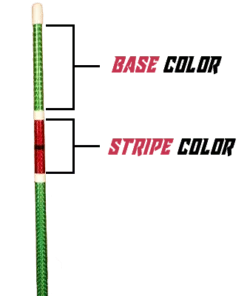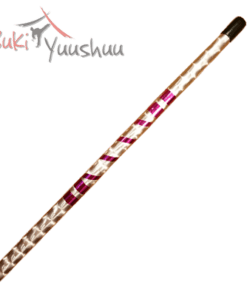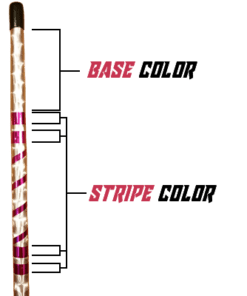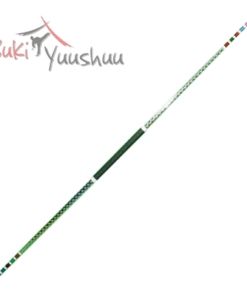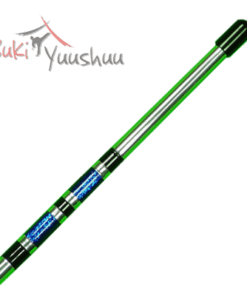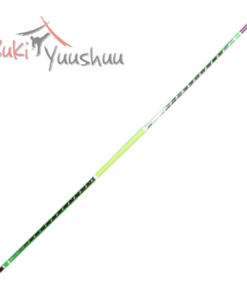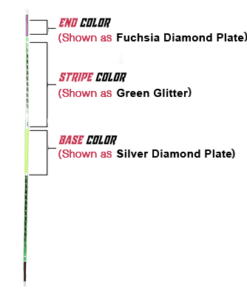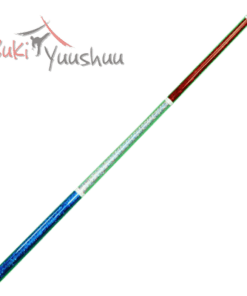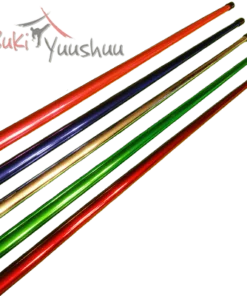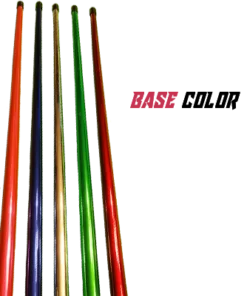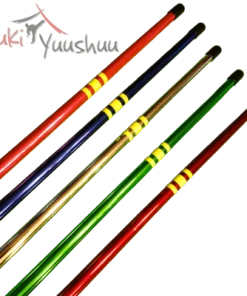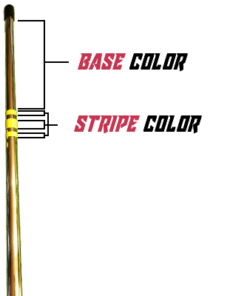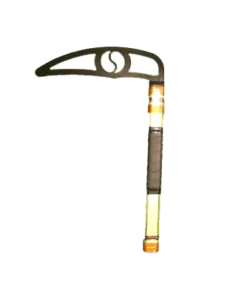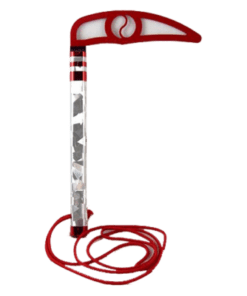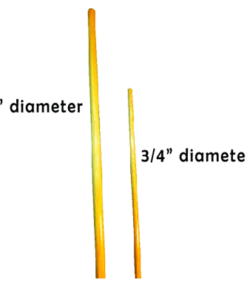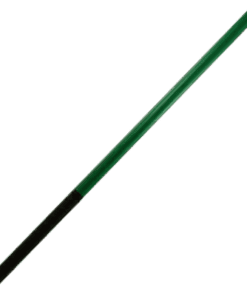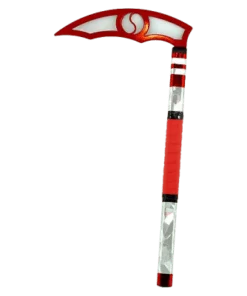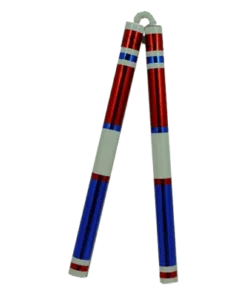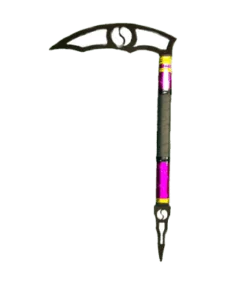Pick your favorite design and customize it
Bo Staffs
FEATURED CATEGORIES
Bo Staffs: A Comprehensive Overview for Martial Arts Enthusiasts
Martial arts fans worldwide are captivated by the bo staffs, a long and cylindrical weapon that boasts profound historical roots. From its ancient introduction in Chinese temples to modern-day dojos, it remains an integral part of many disciplines today. So what makes this tool so intriguing? Let us explore the origins, types of use, techniques available and customization potentials associated with this timeless martial arts implement!
Bo Staffs
-
Bo staffs are a versatile weapon used in Chinese, Korean and Okinawan martial arts traditions.
-
Different types of bo staffs exist to suit different skill levels and techniques.
-
Personalizing your bo staff with dragon designs or other artistic elements can enhance motivation and self expression while proper maintenance is essential for long term performance.
The Origins and History of Bo Staffs
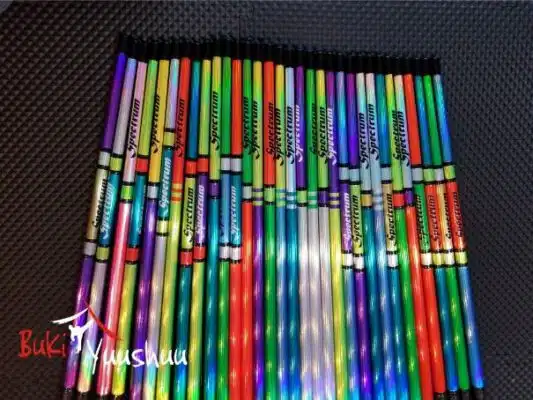
Martial arts have been making use of the bo staff, also known as kaku bo or chukon bu, for centuries. It is a stock weapon which originally came from Okinawa and usually measures around 1.8 meters (71 inches) in length when used during training sessions. This piece of weaponry has proven to be incredibly useful given its versatility and adaptability amongst Chinese, Korean and Okinawan martial artists seeking new skills. The Bo Staff allows one to improve their coordination, balance, and strength through practice, making it great for expanding any arsenal!
Chinese Monks and Kung Fu
Chinese martial arts boast a long history with the bo staff, which is closely associated with Shaolin Temple and its Zen Buddhist monks. This weapon was likely one of the first taught to these disciples in their Kung Fu training as it serves a variety of purposes: techniques like striking and blocking are honed while balance, coordination, and strength are enhanced through use. Martial arts have spread out over East Asia drawing influence from this powerful tool resulting in evolution throughout numerous styles.
Korean Martial Arts
Martial arts in the Korean peninsula have embraced the bo staff’s versatility and incorporated it into their training. A range of different styles is available such as hardwood, foam or even specialized designs to help practitioners find a perfect one for them according to their skill level and objectives. These various types offer an array of striking, blocking and complex techniques for students to master with any kind of style they choose from.
Okinawan Traditions
The bo staff, a weapon with deep roots in Okinawan martial arts culture, is used to this day. With its use has come the development of various associated techniques and philosophies unique to Okinawa. As the originator of such practices related to this particular tool as both a weapon and for training purposes, Okinawa’s history continues inspiring contemporary approaches towards it. Continuing on tradition within martial arts based around weaponry can be done by looking into what helped spawn them - Okinawa’s impactful background when it comes to the utilization of weapons like that from which bo staff practice stems from originally.
Bo Staffs
Types of Bo Staffs: Materials and Styles
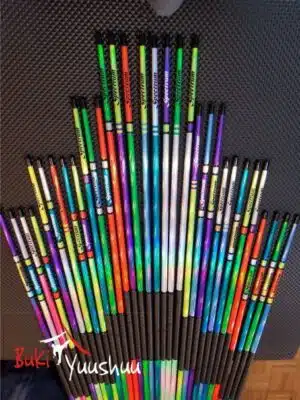
For martial arts practitioners at any stage of their journey, it’s key to find the perfect staff that meets all of their needs for effective training. A range of materials and styles can be found in a variety of hardwood, foam or specialist designs suited specifically towards certain disciplines. Considerations have to be made when choosing which type best suits an individual as each one has its own advantages and disadvantages. To make sure you get the right staff for your particular style, look into what characteristics different types offer so you understand exactly how they’ll work with your practice.
Hard Wood Bo Staffs
A one-inch diameter hardwood bo staff is a popular choice among martial arts practitioners for its durability and usefulness in training. Its tapered ends ensure that it’s able to tolerate rigorous practices, making these weapons resilient even under strain from long hours of practice. Available in various lengths such as 5 foot, 6 foot or 50 inch models, the bo staff can provide reliable support throughout any form of combat technique routine. These sturdy wooden tools are more than capable of withstanding countless drills associated with traditional martial art styles, providing an essential weapon which has remained prized through centuries by those dedicated to mastering their craft.
Foam Bo Staffs
For those starting their bo staff practice or looking for a safer training tool, foam bo staffs are the perfect lightweight and manageable option as an alternative to hardwood. The protective black rubber foam covering provides cushioning with a diameter of approximately 1.25 inches (3cm) offering beginners assurance against any possible harm which may be caused by using heavier materials.
Specialized Styles Bo Staff
When it comes to martial arts, bo staffs are available in various styles such as hardwood and foam. Each style of staff has its own specialized features that can benefit practitioners who wish to hone their abilities according to a particular discipline - Chinese, Korean or Okinawan for instance.
These specific forms come with distinctive advantages and disadvantages. They encompass techniques exclusive to each tradition which should be considered when selecting an appropriate type of bo.
Bo Staff
Bo Staff Techniques: Strikes, Blocks, and More

When you take up martial arts, incorporating a bo staff can give your training whole new capabilities. With the right practice and honing of skills such as striking, blocking, spinning, thrusting sweeping, parrying and disarming – there is an extensive range available with this weapon to make use of in combat.
All these techniques are essential when it comes to mastering the art form so practicing them regularly will both improve your proficiency at using a bo staff but also increase overall skill sets within martial arts.
Striking Techniques
The mastery of striking techniques is an important part of martial arts staff training, such as the rising block, reverse strike and diagonal strikes toward southeast/southwest. These tactics involve thrusting, swinging and attacking maneuvers to build up strength and accuracy in combat situations.
By perfecting these moves, one will be prepared for a broad range of scenarios with offensive or defensive objectives, allowing them to confidently wield their weapon no matter what comes their way!
Blocking Techniques
The effectiveness of blocking is just as important in bo staff training as the ability to strike. Bo staff practitioners should be familiar with techniques such as the Downward Rowing Block, Low Block, Overhead Block and Side Blocks for defending themselves against incoming attacks. These blocks not only provide protection but also boost reflexes and foresight which helps one respond quickly during combat situations.
Mastery over these defensive strategies gives fighters an advantage that could decide a fight’s outcome in their favor when faced with multiple opponents or tricky circumstances. Henceforth, honing your block skills alongside striking skills will immensely benefit anyone who wants to excel at this martial art form involving a bo staffs.
Advanced Moves
As your familiarity with the bo staff increases, new possibilities for intricate and creative techniques become accessible. Techniques like Cross Strike, Down Strike, Downward Smash, Poke and Up Strike call for a superior level of expertise as well as skillful coordination in order to execute them correctly. These moves are an excellent way to test yourself and expand your martial art skills further.
By perfecting advanced maneuvers with the bo staff you can advance across multiple disciplines within martial arts - from combat technique prowess or performance levels. Hence amplifying overall proficiency in this area of study over time.
For those wanting to take their knowledge even further. Into master-level territory, drilling these strikes is pivotal because it provides more subtle control enabling greater finesse when using weapons such as sticks: giving practitioners an extra edge which may not have been attainable before embarking upon mastery courses centered around refining movements related directly/indirectly to the ancient art form known today simply – Bo (staff).
Choosing the Right Bo Staff for Your Training

Making the right choice of staff for martial arts training is a key factor in attaining success. Length, weight, material and skill level all contribute to making sure you pick the perfect weapon for your goals. Taking those into account will help make sure that you select one which helps reach your potential in practice sessions.
When deciding on a bo staff, take length, weight and quality into consideration depending on what stage of proficiency you have achieved already, novice or proficient? It’s also imperative to assess how it feels when handling. This should be taken seriously because ultimately using the correct equipment can give an advantage over opponents who don’t use adequate weapons during combat sports practices.
The selection process requires careful thought, as choosing the incorrect object would reduce effectiveness significantly due to its failure at helping develop skills necessary to become experienced at operating with this form of weaponry. Thus leading up to getting ready to face competitions competently armed!
Length and Weight
When it comes to training with a bo staff, the length and weight of the weapon can have an important influence on efficiency. For instance, if your staff is either too long or too heavy for you, then this could cause difficulty in control which results in inadequate technique being used. On the other hand, using one that’s not sufficiently long or light enough will make it difficult to use effectively during combat scenarios.
It’s advised beginners start off by utilizing a slightly shorter than their height staff that weighs approximately 3-4 pounds before gradually increasing as proficiency grows over time. Taking into consideration personal characteristics such as strength and preferred techniques when finding what works best for them specifically.
Material and Durability
When selecting your bo staff, knowing the differences between material types is essential. Hardwood variations like red oak and white oak are great for challenging training regimens or fighting styles as they offer outstanding durability. Oppositely, foam materials, plastic structures or metal alternatives may have their own advantages in terms of lighter weight but be more suited to specific tasks rather than combat overall.
The kind of material you opt for will directly affect its performance and also how long bo staffs lasts, so consider carefully before making a decision when shopping around for your new bo staff!
Skill Level and Training Goals
Choosing the ideal staff is a major decision, taking into account your current skill level and techniques you want to master. Bo staffs can be used by everyone from novice practitioners up to advanced combatants. When your capabilities advance with time, it may become necessary for you to update your selection of a bo staff so that its attributes remain consistent with those objectives in training.
Customizing Your Bo Staff: Dragon Designs and Other Artistic Elements

When it comes to customizing your bo staff, there’s a world of possibilities! From dragon carvings and other unique designs, you can create something that radiates your individual style. Having an attractive staff also encourages dedication to the practice – giving you another great reason why personalization matters. By taking this extra step in making one-of-a-kind pieces for yourself, not only do you get an eye catching weapon, but you will gain greater connections with both training and equipment itself.
Dragon Design Bo Staffs
Martial artists often opt for bo staffs with dragon designs, which symbolize strength, power and wisdom. They come in many materials - such as wood or graphite - to provide a striking look and powerful representation of the core values of martial arts practice. There is an impressive variety available that makes these staffs even more suitable for their purpose.
Other Artistic Designs
You can make your staff truly unique by incorporating art elements into its design. Expressing creativity and reflecting one’s individual style, carvings, engravings or paintings will draw attention to the weapon and produce an eye-catching look. This way you can personalize it in a special manner while still keeping dragon motifs as part of the decoration.
Customizing with artwork allows for creative expression on this traditional martial arts item, making it truly yours!
The Benefits of Personalization
Having a personalized staff can provide numerous advantages, like more motivation and self-expression. It also allows you to display your dedication towards martial arts while giving recognition to the progress of your own training journey. By having something distinctive from everyone else’s, you will be able to distinguish yourself in regards to knowledge about this field as well as being committed to it.
Caring for Your Bo Staff: Maintenance and Storage

To guarantee the long-term efficacy and condition of your staff, it is critical to follow proper maintenance practices like cleaning, and safeguarding from harm or deterioration. By doing so you can keep your bo stick performing optimally for many years.
Cleaning and Maintenance
To ensure your staff’s quality and longevity, it is important to regularly clean and maintain it. Use a dry cloth with glass cleaner sprayed on lightly, avoiding direct contact between the material of the staff and the solution. Also, thin coats of oil should be applied to preserve its original finish while protecting from potential harm. By taking proper care of wooden staves like this one, you can guarantee their effectiveness as well as prolonging them in time.
Storage Solutions
To safeguard your staff and make sure it’s available for training, the ideal storage conditions are in a cool place with little to no sunlight. Extreme temperatures should be avoided since they can lead to potential damage of the staff. For easy access, you could hang up the staff using ropes and pulleys from a ceiling or simply stand it upright on its own. Appropriate storing methods will ensure that your bo staff stays safe while keeping ready-to-use conditions when needed for practice sessions!
Preventing Damage and Wear
To ensure the durability of your staff, it is important to practice correct techniques and look after them properly. Using leg strength instead of using too much arm power can help keep strain off your stave and by keeping a secure footing, you are better able to prevent damage from occurring in the first place. As for padded bo staffs or other variations, paying attention to their construction materials will also contribute immensely towards protecting against any signs of wear and tear if taken care correctly over time. Adopting good habits when handling your equipment makes all the difference between enjoying its use longer versus shorter due to possible deterioration on account of improper maintenance practices.
Bo Staff Training Centers and Resources

For those new to staff training and experienced practitioners alike, a wide range of resources are available to help you refine your skills. From martial arts centers offering in-person instruction to online tutorials, there’s plenty of support out there if you’re looking for guidance on mastering the bo staff. Various martial arts communities can provide assistance should you need additional advice as part of your journey toward achieving success with this traditional weapon.
Finding a Training Center
Looking for the perfect bo staff training center can be challenging, but there are many options to select from. Karate, Kung Fu and Taekwondo studios offering these classes exist in most locations throughout cities and townships.
For those seeking Assistance in finding a suitable program or facility nearby them, online directories and listings may aid with this search by providing locals with several applicable choices that fit their needs.
Online Resources and Tutorials
From the comfort of your own home, you can easily learn the staff techniques with online tutorials and resources. Courses at Global Martial Arts University and Udemy are comprehensive sources to gain mastery in this area. YouTube videos, instructional books as well as forums can all be useful tools for increasing knowledge concerning the art of using a bo staff.
Martial Arts Community Support
Engaging with the martial arts community offers tremendous benefits in terms of support, expertise and encouragement for a staff training regimen. Networking through online forums, local gatherings and competitions opens up channels to access wisdom from other practitioners while boosting your own determination on this journey.
Accessing all that is available within the martial arts sphere can help one accelerate their progress substantially towards achieving set goals concerning practice with bo staffs.
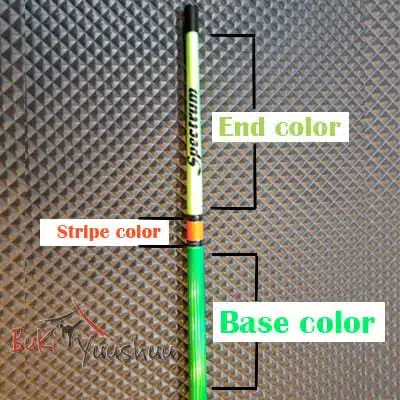
Summary
By selecting an appropriate bo staff for your own martial arts style, you can embark on a fulfilling journey of growth and mastery. Bo staff staves have been used in Chinese, Okinawan, and Korean combat disciplines throughout history – providing a wide array of techniques that allow individuals to customize their approach as they progress with training. No matter what unique combination one creates from the various materials available today, discovering success through exploration is part of the special experience each person has when mastering this timeless weapon!
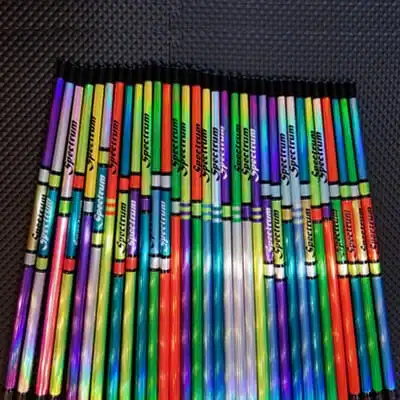
Frequently Asked Questions
Why are bo staffs so powerful?
The bo staff is a formidable weapon, due to the way its grip allows for the transfer of rotational energy by switching palms. The strength behind it comes from the guiding force provided when one hand pulls and another leads.
What do you use a bo staff for?
The bo staff is an excellent martial arts weapon for self-defense against multiple assailants. bo staff can be used to block attacks from opponents, thrusting and striking back with the lower end of the staff afterwards. This tool helps improve balance while providing a great defense option in any dangerous situation. With its effectiveness demonstrated through centuries of practice, it’s no wonder that this bo staff remains a formidable choice among many practitioners seeking protection and mastery over their body movements.
How tall should your bo staff be?
The ideal Bo staff for most people should be at the same height as their head or slightly shorter. For taller individuals, a recommended size is 6 feet (1.8 meters). When selecting one of these martial arts weapons, it’s important to consider your personal stature in order to use the proper length staff with ease and accuracy during training sessions.
What are the most popular types of bo staffs?
Bo staffs come in a range of styles, with the most widely used being hardwood and foam. There are specialized staff variations available as well.
What materials are commonly used for lightweight bo staffs?
Bo staffs, as they are often referred to, can be created from wood, bamboo or graphite, each having its own particular advantages. Bo staff crafted out of these materials offer a unique experience.
https://bukiyuushuu.net/
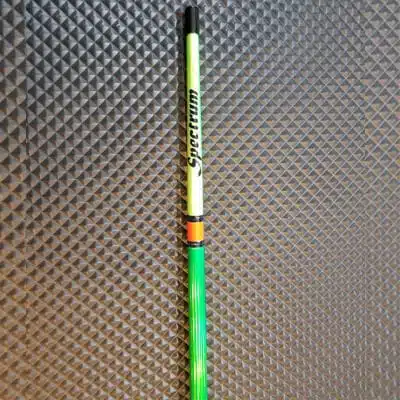
Scholar
https://docs.google.com/document/d/1D5fOs0Jo9Q0SNTMQAXZi--36zdLAkGh-pXUJcl_xg1I/edit?usp=sharing
YouTube
https://docs.google.com/document/d/1gevZZ6OzI2Ogi-3MytSaEwvOBfXK5fDuI9nYkPS8AGE/edit?usp=sharing
Bo Staff Wiki
https://docs.google.com/document/d/1vY-CAH9lXMQLbnPq9mJSrkuEHasAMBmoegXnitZXB8Q/edit?usp=sharing
Google News
https://docs.google.com/document/d/1wfUaJ4mtmOK8pisXDdUDT90aZs2bTnY1RQRvPmj9lvM/edit?usp=sharing
Vortex
https://docs.google.com/spreadsheets/d/1svvHDXGic3_QYbup7y3EeBcg2T9KUJL2B-23tFeNvTQ/edit?usp=sharing
Workers
https://docs.google.com/document/d/1wJqQh8-PvUhpEhMGtVo3UTaWaVwqW3E3qGEWHRjkvtQ/edit?usp=sharing
PasteBin
https://docs.google.com/document/d/1g4Wh2CC_HMUzVWakAD7NqKNfg7SE5HdD4Pd_T2TmY8k/edit?usp=sharing
Scrape
Bo-staff Keywords
https://docs.google.com/document/d/1PpLwjPYQMOEfdMoNQNgRfnDZLmxnUgZlW2afStimSzQ/edit?usp=sharing
Buki Yuushuu also offers different martial arts weapons like nunchaku, kamas and more!
Contact Us Today!
Website: https://bukiyuushuu.net/
Phone Number: (860) 415-4166
Email: [email protected]
Address: 300 Taugwonk Rd, Stonington, CT 06378

